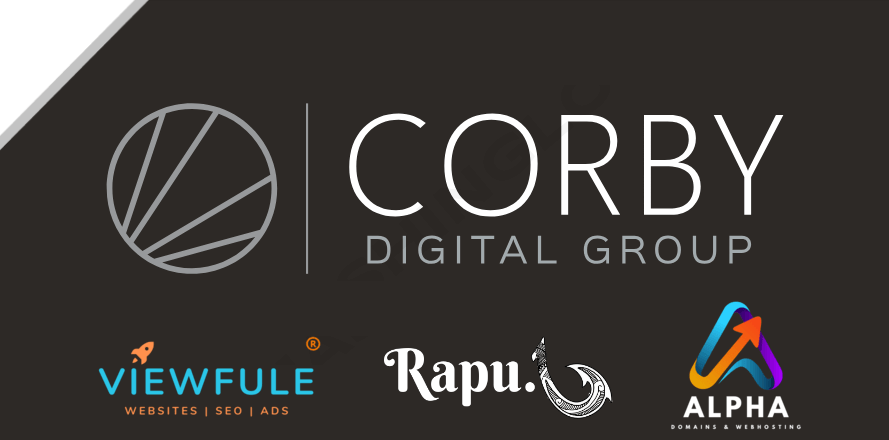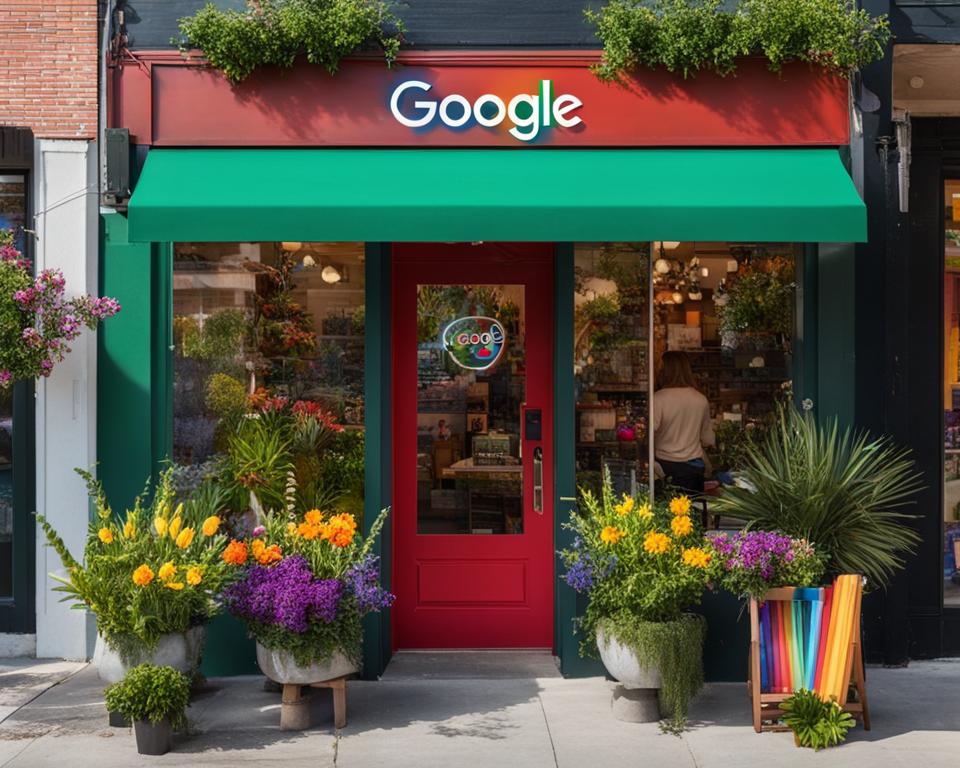Choose the Perfect Domain Name in 2024
Discover expert tips on how to choose the perfect domain name and ensure yours stands out. A must-read for savvy online brand building.
Discover expert tips on how to choose the perfect domain name and ensure yours stands out. A must-read for savvy online brand building.
Welcome to the digital marketplace of 2024, where the importance of quality content has never been more important. As we navigate the intricate web of online advertising, let’s explore why creating and disseminating engaging content is the cornerstone of any successful content strategy. Your brand’s digital presence hinges on compelling narratives and insightful information that captivate your target audience to drive true and lasting engagement.
In an era where consumers are constantly bombarded with promotional messages, the brands that stand out are the ones that offer more than just their products or services; they offer knowledge, entertainment, and a gateway to a more informed digital existence. Crafting a content strategy in online advertising that resonates with your audience requires a deep understanding of their needs and the creative finesse to meet them.
Appreciating the power of content in modern marketing is not just about recognising its role; it’s about mastering its application to form lasting connections with your audience. Read on to discover how to harness the potential of content in 2024 and keep your brand at the forefront of the digital revolution.
As you delve into the annals of digital history, you’ll encounter a pivotal moment that shaped the internet as a platform for brand building and content dissemination. It was in 1996 when Bill Gates, the founder of Microsoft, penned an essay that not only coined the phrase “Content is King” but also prophesied the exponential influence content would have online. This insight has since echoed through the decades, underpinning the fundamental role of content creation in brand building.
The terminology that has become a guiding principle for digital marketers originated from the mind of a tech pioneer. Gates’ essay envisioned the internet as a marketplace for content, where the value of news, software, and original material would be very significant. His accurate prediction laid the groundwork for modern content marketing strategies.
Bill Gates’ frank view on content foresaw a digital era where information would be accessible and shareable like never before. He anticipated a revolution where subscription services would pave the way for innovative content structures, thus empowering both consumers and creators alike. Gates understood that content would become the currency of the internet, empowering brands to reach audiences on a scale previously unimaginable.
The internet, ever dynamic, has seen a multitude of platforms emerge, each fostering its own unique brand of content. Niche forums like Reddit, video-sharing apps like TikTok, and audio-centered platforms like Clubhouse have reaffirmed Gates’ prediction, cementing content’s sovereignty in the digital space. The landscape continuously evolves, highlighting the essential truth that in the realm of digital marketing,content really is king.
| Year | Content Milestone | Impact on Brand Building |
|---|---|---|
| 1996 | Bill Gates’ “Content is King” Essay | Transformative perspective on the future role of the internet in content distribution and brand marketing. |
| Early 2000s | Advent of Blogging | Provided brands a voice and personal touchpoint with audiences; encouraged SEO-centric content creation. |
| 2010s | Rise of Social Media Platforms | Facilitated real-time, interactive brand communications; increased user-generated content and community engagement. |
| 2020s | Expansion of Video and Streaming Services | Gave rise to visual storytelling and influencer partnerships, thus strengthening brand narratives and reach. |
In today’s interconnected digital world, the battle for consumer trust has moved from the high street to the information superhighway. Your brand identity is often first encountered through the content you share online, making it a fundamental part of building a relationship with your audience. It’s not just about creating content; it’s about crafting authentic experiences that resonate with your customers and engender loyalty. Achieving this trust is paramount in distinguishing your brand in an ecosystem awash with competitors vying for attention.

There’s an increasing unease with the intrusiveness of traditional advertising, leading you, along with many others, to seek out content that feels more genuine and less motivated by sales. This shift in perception underscores the need for a strategy that prioritises maximising organic traffic with content creation, an approach that aligns with escalating consumer discernment.
It’s clear that the mechanisms of traditional advertising have lost some sheen, but there is hope in organic content. Found within the search results of Google, nestled within instructional YouTube videos, or across insightful blog posts on social media, lies the key to building audience trust in brand. This kind of content serves as your silent ambassador, explaining, educating, and entertaining without overtly selling—a powerful tool to engage and retain customers.
A recent survey on consumer habits revealed that:
| Consumer Action | Percentage | Impact on Organic Traffic |
|---|---|---|
| Use of Ad Blockers | 47% | Increased Focus on Content |
| Preference for Organic Search Results | 89% | Higher Trust and Engagement |
| Engagement with Brands via Social Media | 55% | Amplified Brand Loyalty |
To nurture this authenticity, remember that your content should serve as a beacon of trust, reliably guiding your audience through the noise and commotion of today’s digital marketplace. By maximising organic traffic with content creation, you’re not only reaching out to potential customers; you’re also fostering a community of informed and engaged brand advocates.
As the landscape of digital media perpetually evolves, the potential of content creation in brand building cannot be understated. Utilising content as a comprehensive branding tool is key not just for audience engagement, but also for etching a distinctive brand identity into the public consciousness. Every piece of content—whether it’s an infographic, a video, or an in-depth article—carries with it the possibility to become representative of your brand’s essence and values.
A blend of strategy and creativity in content creation serves to harmonise various facets of a brand. When you convey messages tailored to resonate with your audience, it fosters immense brand loyalty and recognition. It’s imperative to understand that consistency in both the quality and voice of your content is what will make your brand memorable and trustworthy in the minds of consumers.
Let’s delve into various tools and techniques that encapsulate the essence of successful brand storytelling through content creation:
Understanding the pillars of content that can amplify your brand’s message is also critical:
| Content Pillar | Description | Benefits |
|---|---|---|
| Informative Blogs | Well-researched articles that educate and inform the reader. | Positions brand as an authority, improves SEO. |
| Inspirational Stories | Narratives that connect on a personal level and inspire action. | Develops emotional connections, enhances brand loyalty. |
| Interactive Content | Quizzes, polls, and interactive videos. | Increases engagement, collects consumer data. |
| User-Generated Content | Content created by users through reviews or social media sharing. | Boosts credibility, creates community around the brand. |
Irrespective of the medium, it is paramount that each content piece embodies the heart of your brand, elevating its perception through the consistent delivery of relevance and quality. Alone, an image might capture attention, but through strategic brand building, that image can profoundly associate with your brand’s story and values, leaving an indelible mark on your audience.
“In the realm of branding, content is not just king but the kingdom itself, shaping perceptions, building communities, and driving growth.”
It’s your turn to harness the full spectrum of content’s power in your branding efforts. Remember, successful brands are built on stories told well, and yours has a narrative deserving of a grand audience. Embrace the prowess of a content-driven approach to redefine your brand for the digital age.
In the realm of digital marketing, the saying “content is king” maintains its reign. One primary reason is the significant SEO benefits of content marketing, which stems from its influence on search engine algorithms. When you create content that’s not merely engaging, but packed with expertise, authority, and trustworthiness, you’re essentially tailoring your online presence to the preferences of search engines like Google.
Search engines have a penchant for websites that emit a sense of authority. Hence, crafting content that reflects a deep understanding of your niche can markedly boost your site’s visibility. Content marketing is thus a bridge to engaging your audience through valuable content, which search engines value dearly. As these platforms become increasingly sophisticated, they’re calibrated to reward content that satisfies user queries comprehensively.

The digital space is evolving, and with it, the demands for more interactive and personalised content. Brands that recognise and incorporate interactivity in their content strategy tend to have a better chance at engaging with the audience on a personal level. Whether it’s through quizzes, personalised email campaigns, or interactive infographics, such content can significantly enhance the user experience and thus reinforce audience loyalty and trust.
In today’s digital economy, one cannot overstate the importance of content marketing cost-effectiveness. As you reassess your brand’s promotional activities, consider that an ever-increasing number of marketers are recognising the substantial return on investment offered by effective content strategies. It’s a financially savvy phase; businesses are utilising scalable content strategies to dramatically enhance their reach while keeping expenses in check.
Imagine that content marketing is akin to a Swiss Army knife – a multifunctional tool adapting to your varying needs. It can be calibrated and adjusted in response to performance analytics, market trends, and audience feedback, making it an incredibly versatile aspect of your overall marketing schema. Such flexibility is not only prudent but necessary in a landscape that never ceases to evolve.
| Content Marketing Element | Cost | Long-Term Value |
|---|---|---|
| Evergreen Blog Posts | Low-Medium | High (SEO and Engagement) |
| Social Media Campaigns | Variable | Medium (Brand Awareness) |
| Instructional Videos | Medium-High | High (Brand Trust and Product Understanding) |
| Infographics | Low | Medium (Shareability and Visual Engagement) |
| Email Newsletters | Low | Medium-High (Customer Retention and Direct Marketing) |
When it comes to cost-effectiveness, content marketing often trumps other forms of advertising due to its organic nature—its capability to generate traffic without resorting to paid channels. It’s a testament to the power of a well-articulated message capturing the imagination of your audience, leading to shares, saves, and organic discussion—all hallmarks of successful engagement.
Remember, every piece of content you publish reflects your brand narrative, educating your prospects, nurturing leads, and maintaining existing customer bases—roles that are traditionally managed by separate wings of a marketing department.
This integrated approach not only saves on costs but also streamlines your communication, ensuring that your messaging remains consistent and potent.
As you march forward into tomorrow’s marketing battlegrounds, having scalable content strategies in your arsenal is not just preferred, it is essential. Your audience demands it, and your budget will thank you for it. Content marketing isn’t just cost-effective; it’s cost-smart.
In today’s digital marketing, a robust content strategy is pivotal for connection and growth. Understanding the fabric of your audience – their desires, problems, and behaviours – can drive tailored targeted content creation and sharpen your audience segmentation, leading to more resonant and effective engagements.
Your journey to master content marketing begins with an in-depth analysis of audience segments. Identify distinct groups within your market and understand what motivates each segment. Engage with data, align your content with audience preferences, and monitor how they interact with your brand. This will not only increase your content’s relevance but also its impact.
Once you’ve segmented your audience, the next step is crafting content that speaks directly to them. It’s about striking a chord – a blend of relevance, empathy, and utility woven into each paragraph, video, or post. Insightful content satisfies curiosity, resolves uncertainties, and cultivates a knowledgeable base of followers who look to your brand for guidance.

Let’s put this strategy into perspective with a simplified table. Imagine you own a boutique teashop, and you’ve identified two primary customer segments: Health Enthusiasts and Avid Tea collectors. Here’s how you might approach content creation for each:
| Audience Segment | Interests & Needs | Content Approach |
|---|---|---|
| Health Enthusiasts | Detailed benefits of different teas, wellness tips | Blog posts on tea’s health benefits, wellness lifestyle vlogs, infographics on antioxidants |
| Avid Tea Collectors | Rare tea blends, brewing techniques, history | Newsletters featuring exotic blends, video tutorials on brewing, podcast interviews with connoisseurs |
By leveraging tailored content, you can assure that your message is not just heard but felt, invoking a response and fostering a community around your brand. Take the time to resonate and inform and watch as your content strategy elevates from mere noise in the digital expanse to a symphony that serenades your audience.
Your brand voice is the distinctive personality your brand communicates through its content. It’s essential to mould this voice with authenticity to truly resonate with your audience. A distinctive unique content personality can be the driving force that sets your brand apart in a crowded digital marketplace. It’s not just about what you say; it’s how you say it that can transform mere words into a symphony of brand identity.

Consider the following table that contrasts different content approaches with their impact on brand personality.
| Content Approach | Impact on Brand Personality |
|---|---|
| Conversational Tone | Makes the brand more relatable and approachable |
| Technical Insights | Positions the brand as a knowledgeable leader in its field |
| Storytelling | Emphasises the brand’s creative side and engages the audience emotionally |
| Niche Topics | Highlights brand expertise and dedication to specific areas of interest |
To carve out a unique content personality, you should focus on what makes your brand especial. Infuse personal anecdotes, share behind-the-scenes experiences, or provide expert insights into niche subjects. It’s about creating a voice that reflects your brand’s core values and ethos. In doing so, you form a stronger connection with your audience, one where they can recognise the distinct voice behind every post, tweet, and article as unmistakably yours.
By embracing your brand’s uniqueness in your content, you don’t just follow trends, you set them. Your audience will learn not just to recognise your brand voice, but to look forward to hearing it, to trust it as a source of innovation and inspiration within your industry.
In today’s competitive online space, the marriage of search engine optimisation and authoritative content is not just ideal, but essential. It is through this union that your brand can achieve the online success it seeks. Content marketing for higher search engine rankings involves crafting pieces that resonate with both your audience and search engine algorithms. Let’s delve into how you can manifest this synergy and enhance your brand’s digital footprint.
Understanding and meeting Google’s expectations for quality content is crucial. It looks for signals that signify expertise, authoritativeness, and trustworthiness—components that, when woven into your content strategy, can significantly boost your presence in search results. But what does it take to align your content with these criteria? Focus on evidencing your knowledge, citing credible sources, and maintaining an updated online presence to enhance your authority and trustworthiness.
Creating compelling content is a multifaceted endeavour. From in-depth research to skilful storytelling, every element plays a part in elevating your content’s appeal and effectiveness. To aid in your quest for higher search engine rankings through content marketing, consider imbuing your content with rich information, actionable advice, and a distinctive voice that captures and sustains your readers’ attention.
Below is a guide to the critical dimensions of content that can help you achieve online success:
| Content Dimension | Description | SEO Benefit |
|---|---|---|
| Relevance | Content tailored to answer the direct queries of your target audience. | Higher rankings in SERPs as it meets user intent. |
| Originality | Content that offers unique insights and avoids plagiarism. | Distinguishes your content from competitors. |
| Clarity | Content that is concise and easy to understand. | Improves user experience, increasing time spent on your site. |
| Engagement | Content that promotes user interaction and sharing. | Enhanced visibility and organic reach. |
| Evidence-Based | Content supported by data and credible research. | Builds E-A-T by demonstrating expertise and authoritativeness. |
To showcase your proficiency in an area, interviews with experts and detailed case studies can significantly enhance your content’s credibility. Remember that your end goal is a well-informed reader who trusts your content enough to return for more.
Involve your audience in your brand’s journey by asking for their opinions and encouraging them to share their experiences related to your content. Making this connection with your readers fosters a committed following that can serve as advocates for your brand.

Keep in mind that every piece of content you produce should not only abide by SEO best practices, but should also embody the values and essence of your brand. By striking this balance, you’re on your path to creating compelling content for online success—a journey that will see your brand rise through the search engine ranks, one quality post at a time.
As we wrap up our insights on the ever-potent role of content in digital marketing, it’s paramount to acknowledge the continuous dominion of quality content in engaging and retaining your audience. It’s not simply about filling the internet with words; it’s about crafting narratives that resonate, educate, and convert. Your online success with content marketing hinges upon the calibre of material you put forth—which should be as robust and dynamic as the digital landscape itself.
Throughout the years, the principle that content reigns supreme remains uncontested. From the kernels of Bill Gates’ vision to the multifaceted digital world of 2024, the ability to produce authentic and valuable content is still your golden ticket to attracting and retaining consumers. It’s clear that such content acts as the cornerstone of building lasting online success, positioning it as an indispensable feature in your content strategy for digital marketing.
Steering away from the ephemeral trends, it is the authentic and invaluable content that consistently garners admiration and loyalty. By committing to a strategy that values the creation of engaging, informative, and relatable content, you position your brand as a reliable and authoritative voice in your industry. This shift towards meaningful communication, sustained by a profound understanding of consumer needs, spells the future of customer-brand relationships.
The future beckons with changes and advancements, and your content marketing strategies must evolve apace. Forging ahead, remember to anchor your plans in the practices that uphold the integrity and value of your content. It’s this dedication to quality that will enshrine your brand in the good graces of both your audience and the search engine algorithms. Should you seek further inspiration or guidance in crafting these bespoke strategies for a New Zealand audience, feel free to reach out. Success is just a content piece away—a reality made possible by your investment in superior content creation.
Content is critical in digital marketing because it engages audiences with valuable information, builds trust between consumers and brands, and ultimately drives organic traffic and conversion rates. A well-defined content strategy also enhances online advertising efforts, making it fundamental to digital success.
The phrase “Content is King” was coined by Bill Gates in 1996. It reflected his vision that content would be pivotal on the Internet, providing tremendous opportunities for both information and entertainment. Gates foresaw that those who mastered content creation would have a significant advantage in the digital space.
The digital content landscape has evolved remarkably, with new platforms like TikTok and augmented reality becoming mainstream. Content delivery has become more diverse, including podcasts, videos, and interactive media. These platforms offer content creators more avenues to connect with audiences and build their brands.
Consumers increasingly distrust traditional advertising due to its overtly promotional nature and frequent disconnect with user interests. People prefer organic content that they find themselves, which feels more authentic and less intrusive than conventional ads.
Quality content builds trust by providing consumers with valuable information and solutions that address their needs without overt selling. This approach positions a brand as an expert in its field and fosters a reputation for reliability and credibility.
Content serves as a comprehensive branding tool because it permeates every aspect of a brand’s online presence. With each piece of content, from blog posts to images, brands can weave their narrative and values, creating a coherent and recognisable identity across different media.
Engaging content influences search engine algorithms by demonstrating expertise, authority, and trustworthiness (E-A-T). Google’s algorithms favour websites that provide high-quality, relevant information. Thus, engaging content can improve a site’s search engine rankings and overall visibility.
Content marketing is cost-effective because it generally requires lower investment compared to traditional advertising and has the potential for high ROI due to its enduring online presence. It’s scalable because it can be adjusted to suit different budgets, goals, and audience sizes.
Audience segmentation improves content engagement by allowing businesses to tailor their content strategies to the specific interests, behaviors, and needs of different groups. This targeted approach ensures that content is relevant and compelling to each segment, which can enhance user experience and drive more meaningful interactions.
A brand’s unique voice can be conveyed through the tone, style, and topics of its content. By consistently producing content that resonates with its core values and audience, a brand can distinguish itself from competitors and build a strong, recognisable voice in the digital marketplace.
Google’s E-A-T guidelines outline that quality content should exhibit expertise, authority, and trustworthiness. Content should be well-researched, factually accurate, and provide genuine value to the reader. Additionally, the content’s creator or brand should have recognized qualifications or proven experience in the topic area.
Crafting compelling content contributes to higher search engine rankings by fulfilling user intent, providing relevant and insightful information, and encouraging engagement like sharing and linking. Such content is favoured by algorithms like Google’s, which aim to provide the best answers to users’ queries.
For 2024, businesses should approach content marketing with an emphasis on innovation, personalisation, and interactivity. They must also keep a close eye on evolving digital trends and consumer behaviours, adjusting strategies accordingly to ensure that their content remains current, valuable, and aligned with their audience’s expectations.
Have you ever wondered how some search results come up with enticing info, such as ratings and quick snippets right there on the search engine results pages (SERPs)? It’s all down to something known as schema markup SEO. Simply put, schema markup is a form of structured data that you add to the HTML of your webpage to help search engines understand the content more deeply. This understanding allows for the creation of rich snippets, which can make your webpage stand out among the rest.
It’s not magic, but it sure makes your page more discoverable and appealing to potential visitors. Organisations like Rotten Tomatoes and The Food Network have seen user engagement soar by incorporating this behind-the-scenes coding genius into their websites. What’s more, you can take advantage of such benefits too. By adhering to the guidelines provided by Google Search Central and utilising tools such as the Rich Results Test, you can ensure that your site’s structured data is up to snuff.
By embracing the power of schema.org’s shared vocabulary, you’re giving your content that extra edge in clarity and context, which search engines value greatly. Ready to learn more and give your site’s SEO a significant boost? Keep reading to get fully acquainted with the transformative world of schema markup.
Unravelling the intricate layers of schema markup is like embarking on a journey through your website’s DNA. Comprehending its utility and application is paramount for any digital maestro aiming to boost their web presence and search engine visibility. Let’s explore the pivotal elements and development of schema markup that comprise the structured data SEO ecosystem.
What is schema markup, you might wonder. Simply, it’s the lingua franca for search engines, a codex that explicates the content of your web pages. By embracing this form of structured data, your site can communicate more effectively with search engines such as Google, leading to an enriched user experience via the display of rich snippets.
Schema markup types come in diverse forms, each serving a specific purpose to clarify different kinds of content. Imagine revealing to Google the exact ingredients and cooking times for your culinary creations on a recipe page; that’s the level of detail schema can encapsulate. Implementing schema markup examples optimises the information for search listings, making it straightforward for potential visitors browsing the web.
As digital landscapes flourish, the evolution of structured data mirrors an advancing search arena where user experiences take centre stage. Today’s savvy browsers crave quick, accurate insights, and search engines continually refine their algorithms to satiate this hunger—structured data being integral to this paradigm.
When giants like Google, Bing, Yandex, and Yahoo! join forces, the outcome is nothing short of remarkable. The creation of Schema.org is a testament to their collaboration, providing a shared lexicon, ensuring uniformity in structured data across the digital realm. This synergy amplifies the chances of your content garnering rich search results, ultimately culminating in increased organic traffic to your site.
By harnessing the knowledge of how structured data and search engines coalesce, you’re not only equipping your website for the present but also future-proofing it for the advancements down the road. Now, you’re ready to chart the horizon of structured data SEO, with the wind of schema markup setting your sails toward greater online discoverability.
Unveiling the multiple advantages of schema markup implementation can revolutionise the way your website communicates with search engines. Reflect upon the role that rich snippets and detailed search results can play in enhancing your digital presence.
With schema markup implementation, you can drastically uplift the presentation of your site in search engine results pages (SERPs), bestowing it with enhanced visibility. By enabling rich snippets, users are greeted with more than just the plain text of search results; they witness a vivid display brimming with relevant information. Consider how ratings and reviews can embellish your listings, or how event details can vividly portray the narrative of your offerings.

These detailed insights are not merely for show; they improve the user’s search experience, making it far more intuitive and descriptive. If two links are presented and one has enriched data showing a five-star rating while the other doesn’t, the choice for users becomes much simpler. Thus, one of the foremost schema markup benefits is that it can lead to a superior click-through rate, capitalising on the psychology that favours informative and visually superior options.
Engagement is the currency of the digital space, and rich snippets have a proven track record in boosting it. For instance, pages from the likes of Rakuten utilising structured data have seen a tremendous increase in interaction rates, establishing the schema markup seo prowess. When Nestlé took the leap and implemented schema, it saw an astounding 82% rise in the click rate for rich results pages. The clear message here is that implementing kindred structured data not only garners attention but engenders interactions, a key metric for any website’s success.
Imagine standing out in a sea of search results—this can be your reality with schema markup. Despite its significant advantages, schema markup is surprisingly not utilised by all websites, thereby providing a strategic edge to those who do. It’s a golden chance to distinguish your content and climb the search ranks, as Google and other engines tend to favour pages that communicate effectively through structured data. This results in a virtuous cycle; better visibility leads to more traffic and potentially more conversions, reinforcing the narrative that schema markup is paramount for a perceptible web stature.
Indeed, the integration of schema markup on your website is a strategic move, reinforcing your digital outreach and ensuring that you stay ahead of the competition.
Understanding the vast array of schema markup types is fundamental to enhancing your website’s presence in search engine results through the use of structured data. Each type caters to different content on the web, creating rich snippets that make your entries stand out in search results. Here are a few pivotal implementations supported by Google which you might consider for your site.
Let’s delve into some schema markup examples to distinguish how structured data can be applied to amplify your website’s visibility and user understanding.
| Markup Type | Details Displayed | Benefits |
|---|---|---|
| Product Markup | Image, Price, Availability | Direct product information leads to informed purchasing decisions and improved click-through rates. |
| Review Markup | Star Ratings, Reviewer, Date | Star ratings can increase credibility and influence buyer confidence. |
| Article Markup | Author, Publication Date, Headline | Enables readers to quickly identify authoritative and timely content. |
By incorporating these schema markup types into your website’s code, you pave the way for enhanced rich snippets in search engine results pages. Your content becomes not only easier for search engines to interpret, but also more attractive and informative for users who are navigating through their search queries. Choosing the right schema types and implementing them correctly can significantly boost your online visibility and user engagement.
Embarking on schema markup implementation can dramatically optimise your content for search engines, promoting visibility and interaction. This guide will walk you through choosing the correct format and utilising key tools to incorporate structured data seamlessly.
JSON-LD is the recommended format of choice when it comes to schema markup implementation. Its straightforward, script-based configuration makes it a favourite amongst webmasters and SEO professionals. However, Microdata and RDFa are viable alternatives, especially when you need inline markup. The table below contrasts these formats to guide your selection:
| Format | Ease of Use | SEO Benefits | Integration Flexibility |
|---|---|---|---|
| JSON-LD | High – Script tag based | High – Google’s recommended format | High – Can be placed in the head or body of HTML |
| Microdata | Medium – Inline annotations | Medium – Supported by most search engines | Medium – Embedded within HTML content |
| RDFa | Medium – Inline annotations with link-data capability | Medium – Rich with linking capabilities | Medium – Must be integrated with HTML tags |
Google’s Structured Data Markup Helper is an indispensable tool, aiding in the generation of schema markup SEO code. Alternatively, you may consult free resources available online, including documentation on schema.org, to create your structured data manually. Here’s an overview using an ordered list:
The Rich Results Test tool should be your go-to utility post-implementation. It validates if your schema markup is properly structured and previews how your rich snippets may appear in SERPs. Testing ensures optimal recognition and interpretation by search engines, bolstering your schema markup SEO strategy.
Once you’ve applied your chosen format and tested your implementation, observing the effects on your search engine rankings and user engagement rate should follow. Remember, while structured data does not guarantee a rich snippet appearance, the correct schema markup implementation is pivotal in making your content a likely candidate for these coveted search results.
Centre this schema markup journey around enhancing user experience and watch as the potential of your content being presented as rich snippets in SERPs grows.

In recapitulation, schema markup stands out as a formidable SEO tool with the potential to greatly enhance your website’s presence in search engine results. By demystifying what schema markup is and its many applications, it becomes evident that structured data is not just a mere enhancement—it’s foundational to how search engines interact with your website. Whether you’re posting a recipe or advertising a local event, the right schema markup types can transform your content into visually arresting search results that captivate potential visitors.
The benefits of schema markup are numerous, contributing to a more comprehensible and enriched web landscape. Implementing such structured data correctly could result in significantly improved click-through rates and user engagement—an objective most certainly desirable in the relentless pursuit of online relevance. Yet, despite these advantages, the utilisation of schema markup is far from universal, presenting a unique opportunity to gain a competitive edge.
To manifest the optimal level of search engine visibility and user interaction, it is vital to employ schema markup meticulously, availing oneself of Google’s thorough validation tools. If you’re aiming to refine your web presence and seek further guidance, or have any inquiries concerning structured data, please feel free to reach out via our contact details. By embracing schema markup, you’re not just optimising your content; you’re creating a bridge to ensure your offerings meet the eyes of those who seek it.
Schema markup is a form of structured data that you can add to your website’s HTML to help search engines understand your content better. This understanding allows search engines to create rich snippets, which are enhanced appearances in search results. By providing context to your content, schema markup fosters SEO as it can increase visibility and relevancy in search queries.
Structured data has evolved to be more sophisticated over time, with major search engines like Google, Bing, Yahoo!, and Yandex collaborating through Schema.org to create a shared vocabulary. This ensures consistency in how content is understood and presented across search platforms, which in turn, enhances the user’s search experience.
Schema.org is a collaborative effort initiated by major search engines to create a common set of schemas for structured data. By using this shared vocabulary, webmasters can ensure their content is understood and displayed correctly by Google, Bing, Yahoo!, and Yandex, leading to richer and more interactive search results.
Absolutely, adding schema markup to your website can significantly enhance the way your pages are represented in search results through rich snippets. This improved visibility can capture the attention of users more effectively and potentially lead to an increase in click-through rates.
By utilizing schema markup to create rich snippets, your search results can include additional engaging elements like ratings, reviews, or event details. These elements make your listings more attractive, providing users with information that makes them more likely to click through to your site, thereby improving user engagement.
Schema markup can be a powerful differentiator in search results because not all websites have implemented it. By adopting structured data, you can stand out with more informative and attractive search results, which can increase the likelihood of users selecting your site over others.
There are various schema markup types that can be implemented depending on the nature of your content, these include, but are not limited to, Product Markup, Review Markup, Article Markup, Course Markup, Organization Markup, and Local Business Markup. Each type enables specific rich formats in search results that are tailored to the content they describe.
The choice of format for schema markup—JSON-LD, Microdata, or RDFa—depends on your technical expertise and requirements. However, Google recommends JSON-LD for its ease of implementation and maintenance.
Google provides tools such as the Structured Data Markup Helper to generate the necessary code and the Rich Results Test to validate and preview your markup before publication. These tools streamline the process, ensuring your structured data is correctly implemented.
While implementing schema markup significantly increases the potential for your content to appear as rich results, there is no absolute guarantee. The final decision on whether rich snippets appear in search results ultimately rests with the search engines, but having structured data correctly integrated certainly enhances your chances.
We are excited to announce Corby Digital Group Limited, the new name behind VIEWFULE!
This restructure is a result of our continued growth and commitment to improving our service offerings to our clients. By moving under Corby Digital Group Limited, our clients gain access to additional services and expertise, whilst simplifying the service delivery that will enable us to better serve our clients needs.
All our clients can expect the same high level of service and professionalism that they have come to appreciate from VIEWFULE. Our team remains unchanged and dedicated to providing our clients with tailored solutions that drive their business success. From Bespoke Websites that convert, eye-catching Meta Ads to sell your products to cutting-edge Search Engine Optimisation strategies to get your business found online – we have you covered, and so much more.
I am confident that Corby Digital Group Limited will continue to be a trusted partner in the journey towards digital transformation. To all our clients, I say thank you. Thank you for your choosing VIEWFULE and for your continued support, we look forward to our successful partnership under the Corby Digital Group Limited banner.

The first step when embarking on your digital journey in 2024 is selecting a suitable domain name. It’s the cornerstone of your online presence, the memorable link between your offerings and the global audience. Finding the right one in the sea of domain registration and hosting options can be as impactful as the name of your entity itself. As you gear up to buy a domain, let these insights be your guide, steering you through domain checks, exploring domain extensions, and ensuring domain availability, all to align your digital identity and vision.
Whether you’ve just begun your domain search or are ready for a domain transfer, understanding the nuances of domain names can distinguish your brand from the rest. Employ a keen eye for the domain registrar that fulfils your needs and remain au fait with the trends that will colour the domain landscape in 2024 and beyond. Take to heart these strategies to navigate the domain ecosystem, solidifying your online footprint with a name that encapsulates your ethos and ambition.
When establishing your brand online presence, the significance of selecting an appropriate domain name cannot be overstated. It is the cornerstone of your identity in the digital realm, often being the first point of contact between your brand and potential customers.
Your domain host functions much like a virtual landlord, providing the space for your ecommerce websites and business online store. Notably, a domain name encompasses far more than just a means to access your website. It embodies the ethos of your brand and predicates how customers perceive your digital storefront. It’s about creating a sense of reliability and establishing your brand as a trustworthy entity in the eyes of consumers.
Selecting a .com domain carries the advantage of recognition and trust due to its longstanding prevalence. However, if your brand has a specific niche or locale, a different extension may serve you better. It is crucial to understand which domain extensions are best suited to enhance your ecommerce websites or business online store. Choosing country code TLDs (ccTLDs) may help target a locale specifically, while other TLDs might align better with your broader vision.
“Your domain name serves as a silent ambassador for your brand, extending your reach and speaking to your brand’s authority and professionalism.”
An apt domain name resonates with potential clients, fostering a sense of connection and recognition. This is no small feat; your choice encompasses your brand’s essence and future ambitions. Therefore, let’s explore a comparative analysis of popular domain extensions to elucidate their distinct advantages:
| Extension | Use-case | Perceived Trustworthiness |
|---|---|---|
| .com | Universal for business and commercial entities | High |
| .net | Technical or internet infrastructure sites | Medium |
| .org | Non-profit and charitable organisations | Medium-High |
| .store | Retail and online stores | Medium |
| .nz | NZ-specific companies and businesses | High, within New Zealand |
As you navigate through the options, remember the long-term perspective. Having a domain that can grow with your business, without limiting expansion or varying services, is key to genuine success online. So choose wisely, for your domain name is much more than just a web address—it’s an integral sphere in the constellation of your brand’s identity.
In the realm of online marketing, the significance of a brandable domain cannot be overemphasised. It’s essential to your identity in the digital space, making a memorable domain name a key player in setting a positive first impression. Here’s how to ensure your domain is not only mobile-friendly but also aligned with effective verbal marketing strategies to optimise brand appeal.
When it comes to a catchy domain name, brevity is the soul of wit. Aim for a domain that is under 15 characters to guarantee it’s easy to remember and reduces the risk of any misspellings. Steer clear of slang and instead opt for straightforward and universally comprehensible terms. After all, a domain that’s concise is one that makes a lasting impact.
Uniqueness in a domain gives your brand its distinct edge. However, be mindful that numbers and hyphens can be your downfall by adding unnecessary complexity, particularly in a mobile-first world. Maintain a sleek and simple approach to ensure that your social media handles and domain cohere, which encourages recognition across various online platforms.
The ease with which your domain is spoken can greatly amplify your effective verbal marketing. Select a name that flows naturally, thus encouraging word-of-mouth promotion—a marketing technique as old as time yet remains exceedingly fruitful. Names with a pleasant rhythm resonate more, enhancing your brand’s story and contributing to broader online marketing success.

In conclusion, innovating a brandable domain that is not only memorable but also supports a broad spectrum of online marketing tactics is pivotal. It begins with a positive first impression, a name that sticks, and a domain that complements your brand’s essence. In a digital era, your domain is the cornerstone of your brand’s online identity—make it count.
When crafting your digital persona, the selection of a top-level domain (TLD) or a country code top-level domain (ccTLD) isn’t merely a technical decision—it’s a strategic marketing choice that signals to your audience the character and location of your brand. The customary .com stands as a universally trusted domain extension, enhancing recognisability and consumer trust. However, in the competitive sphere of online branding, your choice of domain extension can be as distinctive and defining as the neighbourhood you choose for a brick-and-mortar business.
If a .com domain is elusive, broaden your horizons. Delving into alternative TLDs may present unexpected opportunities to connect with your niche audience. For instance, a non-profit may find a more natural fit with .org, whereas an online store could excel with .shop. Let’s explore some of the most common TLDs and their connotations within the digital landscape:
| Extension | Purpose | Perceived Audience |
|---|---|---|
| .com | Commercial | Global, Generic |
| .org | Organisations | Nonprofits, Communities |
| .net | Networks | Tech, Internet Services |
| .shop | Ecommerce | Online Retailers |
| .info | Informational | Educational, Resource-based |
Country-specific extensions or ccTLDs narrow down your focal point, providing an element of localisation that could be invaluable for regional targeting and SEO. Flaunting a .co.uk or .de could bolster your standings on local search engines, giving you an edge in geotargeted marketing efforts. Consider this strategic positioning when aiming to entrench within a particular locale, using your domain as a marker for both your brand’s identity and territory.
Your domain extension is more than a mere suffix; it is a powerful communicator. Select a TLD or ccTLD that not only aligns with your industry but also resonates with your target audience, much like you would optimise any other facet of your branding. Remember, with the right domain extension, your brand can signal trust, relevance, and connection, the keystones for a successful and sustainable online presence.
Embarking on the digital landscape requires you to master the art of positioning your brand in the vast expanse of Google search results. A pivotal element in this quest is choosing a unique domain name that not only encapsulates your brand’s identity but also aligns with search engine optimisation practices. The challenge is to infuse relevant traffic-driving keywords while keeping the domain name memorable and reflective of your business’s ethos.

By delicately weaving high-performing keywords into your domain, you provide a clear signal to search engines regarding what your website is all about, which could significantly improve your search engine rankings. Tools like SEMrush or Ahrefs offer domain name inspiration by identifying relevant traffic-boosting keywords that harmonise with your brand narrative.
The pursuit of a domain that resonates with search engine algorithms should not eclipse the necessity for a name that imparts the distinctiveness of your brand. The equilibrium between a SEO-optimised domain and the innovative flair that distinguishes your brand must be meticulously maintained, ensuring that your domain serves as a beacon for relevant traffic.
When creativity seems to falter, domain name generators step in as catalysts for idea generation. These ingenious platforms combine your unique vision with creative domain options, yielding a plethora of SEO-enriched possibilities. Services such as Hostinger Domain Checker or Nameboy extend beyond mere suggestions, incorporating domain name generators into your strategy can remarkably enhance the visibility of your online presence within Google search results.
As you plot your course through the realm of domain selection, remember that a successful domain marries the practical needs of search engine optimisation with the creative expression of your brand’s core identity. May your search be fruitful, leading you to a domain name that stands out amidst the ever-expanding digital cosmos.
When you embark on the journey of securing a domain name for your online presence, it isn’t merely about snagging that perfect web address; it’s also about earnestly protecting your digital persona. Let’s make sure that your chosen domain name isn’t just available, but also safeguarded against any potential threats or mishaps.

Begin by investigating the domain name availability with a reliable WHOIS lookup service, an important first step in affirming that the domain you desire is ready for registration. Once you’ve confirmed that the domain is ripe for the taking, turn your attention to implementing essential domain privacy protection. This barrier is pivotal in maintaining your anonymity, keeping your personal details out of public reach and ensuring that your private information doesn’t become fodder for spammers.
Choosing the right partner in this endeavour is crucial, hence a reputable domain registrar should not be overlooked. They are your frontline defence, providing clear policies on expiration and renewal, which are instrumental in preventing your domain from unintentionally slipping away and becoming accessible to domain squatters or competitors post-expiry.
| Feature | Benefits | Your Action Plan |
|---|---|---|
| WHOIS Lookup | Confirms domain availability. | Before purchase, ensure the domain is not taken. |
| Domain Privacy Protection | Shields your personal information. | Opt for privacy add-ons during domain registration. |
| Reputable Domain Registrar | Transparent expiration policies. | Select a registrar with a solid reputation and clear terms. |
Always keep in mind that a secure domain contributes significantly to a secure brand image, and by extension, bolsters the trust your audience places in your business. It forms a foundational part of your digital security measures, fundamental in fortifying your establishment’s repute in cyberspace.
Discovering that your preferred domain name is not available doesn’t have to be the end of the road. Instead, it provides a unique opportunity to explore and employ novel strategies that ensure your brand’s digital presence remains unique and engaging.
When you find your desired personalised domain taken, consider the vast array of global domain alternatives at your disposal. From creative domain registration with varied TLDs to selecting a country-specific domain that resonates with your target demographic, the opportunities to carve out a niche online space for your brand are infinite.
Utilise the WHOIS database to gather insights into domain ownership. This can reveal the possibility of domain offer negotiation, especially if the current owner’s usage of the domain appears dormant. With the right approach, securing an otherwise unavailable domain might just be achievable, providing a tailored and branded online experience for your audience.
Embracing domain variant brainstorming can be your plan B. Starting with new domain names, think outside the box and conjure up variations that reflect your brand’s essence. Whether it’s incorporating your brand alongside a shop prefix or tapping into the local nuances with a ccTLD, your originality will lead to a domain you can call your own.

Below is a table detailing some creative approaches to domain registration when faced with your first choice being taken:
| Domain Strategy | Description | Example |
|---|---|---|
| Alternative TLDs | Utilising different top-level domains to find an available match. | YourBrand.tech |
| Country-Specific Domains | Choosing a domain that targets a specific country for local presence. | YourBrand.co.uk |
| Keyword Incorporation | Integrating relevant SEO keywords into the domain name. | BestYourBrandStore.com |
| Brand Variation | Creating a slight alteration to your original domain to keep it distinctive. | YourBrandOnline.com |
Embrace the challenge as an invitation to innovation and rest assured that with determination and creativity, securing a domain that aligns with your brand is well within reach.
Your online brand identity is intertwined with the domain name you choose, making it a cornerstone for building a successful online presence. It’s not merely a URL, but the digital representation of your ethos, the first point of contact on the internet for your clients. By following the domain name tips outlined in this article, you position yourself to craft a name that resonates with both your brand and your audience.
Availability is a critical factor, but don’t be deterred by initial obstacles. The vast expanse of TLDs offers a sandbox of potential, brimming with creative variations and negotiation opportunities. As you navigate these waters, balance your brand’s distinctiveness with pertinent SEO strategies to ensure that your domain stands out in the crowded market of today’s digital landscape.
Remember, your domain is more than a mere accessory to your online presence—it’s the vital link forging a connection with your customers, the beacon guiding them to your virtual doorstep. Every effort you put into selecting the perfect domain pays dividends in establishing a robust online footprint. Should you require further assistance, our team at Viewfule is on hand to steer you towards the shores of digital success—reach out to us via email or give us a call for tailored advice.
Choosing the right domain name should reflect your brand, be memorable and concise, and avoid complex elements like hyphens and numbers. Aim for domain extensions that convey trust and if possible, incorporate relevant SEO keywords to improve search engine discoverability.
A memorable and brandable domain strengthens your online marketing efforts by being easy to recall and share, which can lead to more organic traffic. It makes a positive first impression and reinforces your brand appeal.
Domain extensions, such as TLDs or ccTLDs, can influence user perception and can be tailored for local relevance or specific business types to strengthen credibility and audience relevance. They are like choosing the right neighbourhood for your online presence.
Incorporating SEO strategies, such as keyword integration, can improve your site’s visibility in search engine rankings, drawing in relevant traffic. However, balance SEO with creativity to maintain a distinctive and unique domain name.
Check domain availability using domain search and WHOIS tools. To protect your domain, register it with a reputable domain registrar that offers domain privacy protection and understand expiration policies to avoid losing your domain.
If your desired domain name is taken, consider exploring different TLDs or SLDs that still align with your brand. You can also analyse the current domain’s usage and potentially contact the owner for a purchase or brainstorming variations for an original domain.
Yes, when faced with domain name unavailability, try brainstorming new variations, exploring alternative TLDs or country-specific domains, or researching to make an offer on an existing domain. Creativity and flexibility are key to finding a unique and relevant domain.
Imagine your website running at the pace of light, serving pages before a visitor can even blink. With smart caching strategies, this can become your reality. Smart caching is your ally in the quest for website speed optimisation, designed to dramatically improve website performance. By adopting cutting-edge caching methods, not only can you increase website loading time, but also offer a seamless user experience that keeps visitors engaged. It’s time to harness the potential of smart caching and see the transformation for yourself.
When you aim to enhance your website’s performance, it’s crucial to grasp the concept of website caching and how it can significantly accelerate your page loading times. By utilising smart caching strategies, you’re not just improving your site’s responsiveness, but also contributing positively to the core web vitals, pivotal for your site’s search engine ranking and user experience.
In its most fundamental form, website caching is akin to having a photographic memory; it stores copies of your site’s elements so that they can be quickly retrieved without necessitating a fresh round of data fetching. This ensures that when repeat visitors arrive at your site, they’re met with blazing speed rather than the tedium of loading delays.
The two protagonists in the caching narrative are the browser cache and the server-side cache. The former takes the initiative at the user’s end by keeping local copies of web resources, while the latter shoulders responsibility server-side, delivering an express experience to all users with its resourceful copies of essential assets.
The trio of metrics that constitute Google’s core web vitals – Largest Contentful Paint (LCP), First Input Delay (FID), and Cumulative Layout Shift (CLS) – are more than just benchmarks. They encapsulate the essence of user experience on your website. Effective caching mechanisms can help sharpen these vitals, ensuring that your website not only delights users but also climbs the search engine ladder.
The digital landscape is continuously evolving, and with it, the imperative to improve website performance becomes more pressing. In the dynamic terrain of online interactions, smart caching strategies are not just additional features but pillars of a robust web presence that significantly improve page loading speed and reduce latency.
Imagine enhancing user experience by seamlessly delivering content without the wait. With smart caching, this becomes your new reality, allowing for an automated 90+ PageSpeed score, propelling your website to meet and exceed the stringent requirements of Google’s Core Web Vitals.
You might be wondering, how does smart caching manifest in tangible benefits for your site? Let’s delve into the details.
Displaying the efficiency of smart caching doesn’t require just words; the numbers speak for themselves:
| Aspect | Before Caching | After Caching |
|---|---|---|
| Page Loading Speed | 5 seconds | 1.2 seconds |
| Mobile Engagement | 30% | 83% |
| Google PageSpeed Score | 65/100 | 95/100 |
Caching isn’t just a fleeting trend; it’s a profound transformation in managing your web resources – a pivotal move towards a smoother and more efficient user experience.
Lastly, let’s not forget the overarching objective: a superbly crafted website experience that retains users, encourages exploration, and increases the likelihood of conversion. By harnessing the prowess of smart caching, you are setting the stage for your website to thrive in performance and reliability.

Your journey towards a nimble, high-performing website begins with smart caching. By embracing these strategies, you equip your website with the agility it needs to compete and succeed in today’s fast-paced internet ecosystem.
Embarking on the journey to supercharge your website’s performance? The cornerstone of your success could well rest on smart caching technology. It’s an innovative approach to making your site not just faster but also more efficient. Let’s explore the key elements that constitute this transformative technology.
With visitors’ patience thinning against slow-loading pages, advanced caching layers turn out to be your ace in the hole. By deploying systems such as NGINX FastCGI Cache, you’re effectively slashing load times. These layers swiftly serve up compressed, static versions of your content, making that wait for page load practically vanish.
It’s no secret that optimising images can lead to performance gains, and smart caching takes this to the next level. By utilising the latest formats like WebP and savvy compression techniques, your website’s images become a catalyst for speed without skimping on visual quality. This not only boosts engagement but also augments your SEO efforts.
Keeping your content fresh while maintaining speed sounds like a juggling act, but with smart cache invalidation, it’s a breeze. This mechanism ensures that once content is edited, the cached versions are swiftly updated. Your audience always gets the most up-to-date information, and your website continues to perform at lightning speed.
In a digital realm where even milliseconds count, utilising website speed tools equipped with these capabilities is crucial. Improvements in advanced caching layers, image optimisation protocols, and smart cache invalidation are not just beneficial for your site’s performance—they’re essential for sustaining and enhancing user experience and retention.

As you aim to enhance your online presence, it is crucial to understand that the speed at which your website loads can make or break the user experience. In the competitive digital arena, website speed testing is not just a box-ticking exercise but a cornerstone of site optimisation. The adoption of robust caching solutions can be a game-changer in achieving desired website performance levels.
A deep dive into the intricacies of caching will reveal that server-side technologies such as Apache, Nginx, and PHP-FPM are fundamental in streamlining data delivery. When these are configured aptly with database systems like MariaDB, they cultivate an environment ripe for website speed optimisation. Imagine your user’s contentment when pages load instantaneously, thanks to a harmonious fusion of server management and caching!
In practice, enterprises like Cloudflare Enterprise empower your website with content delivery networks that distribute the load, reducing latency and ensuring high availability across the globe. Likewise, platforms like Cloudways offer fully managed cloud server hosting that not only promise but deliver remarkable reductions in page load times.
Whether it’s Memcached and its efficiency in memory object caching or Redis with its advanced key-value store capabilities, incorporating these technologies into your website architecture can significantly propel performance. Turn your focus onto your caching strategy, and watch as your website gracefully handles a tenfold increase in traffic without breaking a sweat.
Remember, every millisecond matters when it comes to user retention and search engine rankings. Opt for caching solutions that resonate with your unique website needs, and let the digital gears turn in your favor.
In the quest for achieving peak website performance, understanding and utilising metrics to gauge the success of website speed optimisation is imperative. Tools like Google PageSpeed Insights stand at the forefront of providing valuable feedback, informing you on how well your site performs and outlining areas for improvement through caching optimisations.
Google PageSpeed Insights is a powerful tool that synthesises performance metrics into actionable insights. When you feed your site’s URL into this tool, it returns a wealth of data reflecting both the speed and usability of your site on various platforms. The PageSpeed score, along with specific recommendations for enhancements, can set the stage for targeted website speed optimisation strategies.
From the analysis provided, certain bottlenecks may become apparent, often highlighting areas where caching optimisations could markedly improve performance. These might range from straightforward fixes, like enabling browser caching, to more complex solutions like setting up a network of distributed cache servers.
There’s no more persuasive evidence of the benefits of caching optimisations than a side-by-side comparison of performance data. To succinctly demonstrate the impact, let’s look at the tangible improvements caching can bring to your site’s loading times and overall user experience through an illustrative table:
| Metric | Before Optimisation | After Optimisation |
|---|---|---|
| Page Load Time | 5.4s | 2.2s |
| Time to Interactive | 6.8s | 3.1s |
| Largest Contentful Paint | 4.2s | 1.8s |
| Google PageSpeed Score | 68 | 92 |
Keep in mind that each website is unique; thus, the caching strategies you employ might have different outcomes. The key is to continually test and tailor your approach to fit both the needs of your website and the expectations of your users. By staying informed and proactive in website speed optimisation, you ensure your site remains a swift and responsive asset to your digital strategy.
When you’re ready to supercharge your site’s responsiveness, selecting and configuring caching becomes paramount. As you delve into the realm of smart caching strategies, the tools you choose must not only be robust but also tailor-made for your website’s unique requirements.
The journey towards optimum site speed commences with a careful choice of caching tools. Whether you’re opting for Redis, Memcached, or any other caching system, it’s the precision in matching these tools to your site’s needs that spell the difference between a decent performance and peak efficiency.

Here is a peek at some of the leading website speed tools that are transforming the landscape:
| Tool | Use Case | Benefits |
|---|---|---|
| Redis | Data caching and storage | High performance, supports various data structures |
| Memcached | Memory object caching system | Reduces database load, improves site speed |
| Varnish Cache | Web application accelerator | Faster content delivery, flexible configuration |
Mastering the art of caching involves more than just choosing the right tools; it’s about finely tuning these systems to work in harmony with your browser and server settings. Whether you’re setting expiry times on static assets for browser caching or tweaking server-side mechanisms, precision is key to unleashing your site’s speed.
To ensure ongoing peak performance, site maintenance is as crucial as initial configurations. Regular reviews of your caching strategies against performance metrics will inform necessary adjustments and updates, ensuring that your users are always met with lightning-fast load times.
By embracing these disciplined approaches to site maintenance and caching, your website can continue to perform at its best, every single day. Remember, fine-tuning your caching setup isn’t a one-time event; it’s an ongoing process of adaptation and improvement.
In summary, equip your digital domain with smart caching strategies to exponentially improve website performance and to navigate the tides of modern internet usage effectively. As you have learned, website speed testing stands as a testament to the power of caching, validating the perpetual quest for accelerated page responses and user satisfaction. It’s evident that every millisecond pared down from loading times can bolster user engagement and contribute positively to your site’s success.
The arsenal of website speed tools available today, ranging from browser caching to server-side solutions, provides an adaptable framework for businesses to enhance website responsiveness. This, in turn, primes your site for peak performance, ensuring that your audience enjoys a seamless and rewarding online experience. Remember, staying abreast of technological advancements is not just a mark of innovation; it’s a strategic imperative for carving out and maintaining your niche in the digital realm.
Your efforts to optimise and refine your website’s engine with state-of-the-art caching will invariably differentiate you from the competition. For tailored advice or to initiate a partnership that will transform your website into a high-octane performer, always feel free to reach out to us at . Let’s collaborate to magnify the efficacy of your website, making each visit a memorable journey for your users while you steadfastly ascend in a swiftly evolving digital world. Contact us for more information and we can fully integrate any of the smart caching strategies shared in this article at .
Smart caching refers to the use of advanced caching strategies that store frequently accessed data so that it can be quickly retrieved. This significantly improves website performance, reduces server load, and increases website loading time by preventing the need to fetch the same data repeatedly.
The browser cache stores copies of resources locally on a user’s device, speeding up page load for the individual, while server-side cache refers to storing web resources on the server. Server-side caching benefits all visitors and reduces the work the server has to do to generate a page view.
Effective caching can positively influence Core Web Vitals by significantly improving load times and the stability of content as it loads (reducing layout shifts), leading to a better page experience and potentially higher search engine rankings.
Smart caching strategies can enhance website performance, improve page loading speed, reduce latency, and improve user engagement. They can also help in achieving better scores on website performance tests and contribute to higher search engine rankings.
Advanced caching layers like NGINX FastCGI Cache can handle a variety of resources, storing compressed and static versions of dynamic content. This means that when a user requests a page, the server can deliver it almost instantaneously, enabling faster load times.
Optimising images and files reduces their size without compromising quality, meaning they load faster. Techniques like using WebP format for images and minifying CSS and JavaScript files are common methods to streamline your website’s resources.
Smart cache invalidation mechanisms ensure that cached data is updated when the original content changes. This helps in maintaining up-to-date information on the website without sacrificing loading speed.
Tools such as Google PageSpeed Insights provide detailed analysis of a website’s performance, highlighting areas where caching could improve speed and efficiency. They also offer recommendations for caching strategies that could potentially enhance site performance.
Identifying bottlenecks allows you to target specific areas that are causing delays in loading times. By focusing caching solutions on these areas, you can most effectively improve your website’s performance.
When choosing caching tools for your website, consider the type of content your site presents, the traffic volume, the hosting environment, and compatibility with your content management system. It’s essential to select tools that align with your specific website needs.
Configuring caching for best results involves setting appropriate expiry times for cached resources, using cache-control headers wisely, and ensuring dynamic content is cached correctly. This process requires an understanding of user behaviour and website structure.
Best practices for caching include regularly monitoring your cache hit rates and expiry times, ensuring your cache is cleared after updates to your site, and setting up cache invalidation rules. For site maintenance, regularly update website components, monitor website performance, and adjust your caching strategies as necessary.
You’ve likely heard the buzz around local SEO and its undeniable power to boost a business’s visibility online. Yet, you may not have uncovered the full potential of optimising your Google Business Profile (GBP) to amplify this effect. An optimised GBP acts as the beacon that guides local clientele right to your digital doorstep, and it’s an indispensable element to ensure your establishment garners the attention it deserves. In this era of accelerated digital interaction, learning how to use Google Business Profile effectively can significantly improve your website ranking and increase local visibility.
Let’s embark on a journey to optimise your Google Business Profile, unlocking the secrets to thrive in the competitive landscape and capture the local market like never before. Utilising every feature GBP offers, from meticulous entries in all possible fields to active engagement tools, could escalate your presence tenfold. Ready to transform how your business is perceived within its local sphere? Let’s boost that local SEO and propel your business to new heights.
As a savvy entrepreneur or marketer, harnessing the power of SEO for local businesses is no more a luxury – it’s an imperative stratagem. With the pre-eminence of Google My Business (GMB) in the world of local SEO, it’s crucial to perfect your profile for optimal visibility. By executing comprehensive local keyword research and regularly updating your entries, you can substantially improve your website ranking.
Delving into the dynamics of GMB showcases a multifaceted platform ripe for exploitation. The first step in your journey is to optimise your Google My Business listing. This isn’t merely about confirming your business’s existence; it’s about portraying a vivid, engaging narrative through which your offerings resonate with the local clientele.
Consider the path ahead, where local keyword research guides your narratives, and strategic optimisation transforms GMB from a mere listing to a potent local SEO resource. Follow these insights, and your venture could well become a lighthouse amidst crowded local markets, signalling its presence across Kapiti, Paraparaumu, and beyond.
Unlocking the full potential of your local presence online begins with crafting a business description that speaks directly to your community. By prioritising relevant geographical keywords and making every character count, you set the foundation for a thriving local digital footprint. Such a strategic approach ensures that your organisation is not only listed but also stands out in local directory listings, bolstering your local citation building efforts and cementing your reputation in local search engine optimisation.

Let’s delve into the nuances of refining your description to resonate within your immediate locale and the broader area you serve.
Imagine a potential customer in Kapiti searching for a local florist. They’re likely to use terms embedded with location indicators. This is your opportunity to align your business with the customer’s expectations. By integrating key terms such as local wedding florist in Paraparaumu or best wedding florist in Kapiti, you not only optimise your Google My Business profile but also extend your reach across the region.
Every character in your business description is prime real estate in the world of local search engine optimisation. With just 750 characters at your disposal, it is essential to construct each sentence with precision and intent. Your task is to weave a narrative that is both informative and saturated with local SEO nuances. As you mould your description, factor in the significance of phrases that potential clients use when seeking services in the digital mosaic of their neighbourhoods, ultimately aiming to improve your website ranking and establishing a formidable local presence.
For local businesses eager to boost local SEO and increase local visibility, the strategic incorporation of geo-tagged photos in your Google My Business profile is invaluable. In the quest to attain prominent rankings and local backlink building, this often-overlooked aspect can provide a substantial advantage.
Envision your business popping up in Google Maps as a beacon for localised searches—not merely because you’re geographically close, but because you have furnished your GMB profile with compelling, geo-tagged images that resonate instantly. These images serve not as static placeholders, but as dynamic ambassadors of your brand ethos and the tangible quality of your offerings, effectively connecting with the community and embedding your presence in the local landscape.
Why are geo-tagged images paramount for local SEO?
But how do you ensure you’re maximising the potential of these geo-tagged images? Below is a table pinpointing key actions you can take to enrich your GMB profile with local flavour:
| Action | Purpose | Outcome |
|---|---|---|
| Regularly update with new photos | Keeps your GMB profile current and engaging | Encourages higher engagement rates and improved visibility |
| Optimise photos with local landmarks | Strengthens local relevance | Positions your brand as an integral part of the community |
| Tag images with precise locations | Enhances SEO by showcasing relevance to specific search queries | Drives targeted traffic and helps with niche market penetration |
Your duty as a dynamic participant in the digital marketplace is clear. By continually refreshing your inventory of geo-tagged visuals, you take command of local narratives—and in the process, you don’t just exist in the community, you help to define it. So leverage these tools to their fullest extent and watch as both Google and your clientele come to associate your name with local quality and presence.
Engaging with potential customers via your Google My Business (GMB) profile is a pivotal step in deploying effective local seo strategies. The versatility of GMB allows for an array of interactions that not only boost local visibility but also enhance local search engine optimisation, enabling your business to attract more customers.

An integral feature of GMB is the ability to create robust ‘Posts’ that serve as direct marketing channels to your client base and interested bystanders within your local area. By fully utilising this functionality, you can keep your audience informed of the latest offers, updates, and news – all contributing to the recent surge in businesses adopting GMB as a core component of their local SEO and marketing toolkit.
When you promote special offers through GMB Posts, you provide immediate value to users searching for your services or products. The direct nature of GMB Posts means that these promotions can grab attention right at the moment of search, increasing the likelihood of conversion.
Integrating an effective call-to-action (CTA) within these posts not only nudges prospects towards engagement but also drives them to take immediate action. Whether it’s a prompt to “learn more” about a service or an encouragement to “call now” to book an appointment, a well-crafted CTA within your GMB Post can be a game-changer in securing customer commitment.
By consistently applying these techniques to your GMB profile posts, you can ensure that your business not only maintains a robust digital presence but also fosters an active and engaging community around your brand – a surefire method to climb higher up the local search results rankings.
Increasing your enterprise’s accessibility is a vital step towards amplifying its local search engine optimisation. With the advent of the Messaging feature in your Google My Business (GMB) listing, you can effortlessly bridge the gap between clientele convenience and business responsiveness. This innovative functionality not only facilitates immediate communication for when prospects message through your GBP but also enforces the perception of your business as attentive and customer-centric—cornerstones for improving local directory listings and broadening your increase in local visibility.
Let’s explore how enabling the Messaging option in your business profile can establish a more seamless interaction with your customers:
Embracing Messaging within your GMB listing does more than just keep pace with technological trends—it opens new avenues to enrich customer interactions and, by extension, fortifies your local SEO impact. Utilise this timely feature to ensure that when potential clients are on the hunt for services, your business stands out as the most accessible and responsive option in local searches. Make it straightforward for customers to engage with you, and watch your local visibility flourish.
Enhancing your local search engine optimisation efforts with customer feedback on Google My Business (GMB) not only shapes your online reputation but also strengthens your affinity with local backlink building and local citation building. Let’s explore how reviews can transform your local visibility and foster a more engaging customer experience in your corner of the world.

To enhance your GMB profile, consider developing strategies to incentivise customers to leave their thoughts and experiences. This doesn’t just build a repository of online reviews; it actively engages your clientele, creating a dialogue that echoes across the locality. Whether you’re nestled in the heart of Kapiti or the bustling streets of Paraparaumu, encouraging client feedback is paramount for your local ranking.
By utilising these tactics, you’re likely to see a notable increase in local visibility, inviting potential customers to take note of your business.
As the digital arena becomes more competitive, maintaining a stellar online reputation is indispensable. It signals to both Google’s algorithms and potential customers that your business is a trusted and valued member of the community. Let’s dissect how reviews can solidify your standing in the local search landscape.
| Strategy | Action | Benefit |
|---|---|---|
| Review Monitoring | Keep a close eye and respond to both positive and negative reviews in a professional manner. | Builds customer trust and conveys a proactive stance on customer service. |
| Review Solicitation | Actively ask for reviews via multiple channels, including in-store signage and digital receipts. | Increases the volume of reviews, contributing to local citation building. |
| Review Utilisation | Highlight positive testimonials on your website and social media. | Enhances brand credibility and can lead to local backlink building opportunities. |
Meticulous management of your online reputation, through proactive review solicitation and response strategies, can not only propel you to the forefront of customer consideration but also earth a steadfast foundation for your local online presence. By embracing the power of positive testimonials, you map out a route to improved click-through rates and a higher ranking in local search results.
If you’re a business with ambitions beyond your immediate geography, or you operate without a physical address, the benefits of Google My Business (GMB) are still within your grasp. As a Local SEO specialist in Kapiti or a local SEO expert in Paraparaumu, you can creatively exploit GMB features to enhance your local visibility and improve website ranking, irrespective of your physical location. This realm of optimisation calls for innovation – a challenge to grow your local relevance through digital channels.
One such approach involves using GMB to funnel calls from those seeking local services, which in turn can autoforward them to acquire your services or download your application. This technique effectively positions your business right into the local search stream, converting those searching interludes into tangible business opportunities without necessitating a local postal address.
The application of GMB as a growth conduit isn’t just about visibility; it’s about meaningful interaction. When it comes to mastering the art of local engagement without a storefront, you’ll find that GMB’s tools are specially tailored to craft a local presence that resonates with potential buyers, irrespective of their proximity to your actual base of operations.

To capitalise on this opportunity, begin by defining your ‘golden goose’ keyword – a term that aligns seamlessly with your business offering yet is specific enough to stand out in the local search. This crucial step solidifies the connection between what you provide and the local demand it meets. With a meticulously crafted Google My Business listing enriched with carefully chosen keywords, even non-local businesses can attain the coveted goal of enhanced local visibility and improved web traffic.
Here’s a table to demonstrate how non-local businesses can utilise GMB features effectively:
| Feature | Benefit | Implementation |
|---|---|---|
| Service Areas | Targets local customers without a physical presence | Specify regions you serve on your GMB profile |
| Posts | Engages with the local market on promotions and updates | Share timely posts with local relevance |
| Reviews | Boosts credibility among local searchers | Encourage customer feedback irrespective of their location |
| Photos | Connects your brand visually to local culture and landmarks | Upload images that resonate with local themes |
By reimagining Google My Business utilisation, your enterprise can establish a stronghold in various localities, fostering connections that may have been beyond reach. Such strategic prowess exhibited by a local SEO expert in Paraparaumu or a dedicated Local SEO specialist in Kapiti guarantees your business does not merely contribute to the digital marketplace but commands it, ensuring your voice is heard and your brand is seen amidst the local and beyond.
In harnessing the features of Google My Business, you equip your venture with a robust tool for local SEO stratagem. Your meticulous attention to crafting descriptions that echo with local relevance, to engaging with customers through Posts and real-time Messaging, illuminates the path to dominance in local search results. It’s not just about visibility; it’s about building a trusted brand that resonates within your community—a mission that every local business in Kapiti or elsewhere, understands deeply.
Adopting a comprehensive approach to your local SEO strategies, where GMB becomes a pivotal asset, is the keystone in your journey to outstanding local digital prominence. Actively encouraging and managing customer reviews, you create a cascade of credibility. All these efforts, woven seamlessly into the fabric of your digital presence, fuel a narrative where local customers discover, engage, and advocate for your brand. By continually evolving within this digital ecosystem, you ensure your position as the go-to local business in the hearts and minds of your community.
Your Google My Business listing is a living digital entity that thrives on updates and interactions. Keep it complete, keep it current, and let it truly showcase what you offer. Should you need further assistance or have any inquiries on how to use Google Business Profile effectively, please reach out at or dial 0800 150 803. Let’s collaborate to 10x your local SEO presence and cement your standing as a distinguished local business in Kapiti or wherever your business calls home.
You can utilise your Google Business Profile (GBP) to improve local SEO by ensuring your business information is accurate, complete, and updated regularly. This includes your business name, address, phone number, category, and attributes. Regularly updating your profile with fresh content like posts, photos, and special offers will also enhance your visibility and attractiveness to your local audience.
Optimising your Google My Business listing is vital for local SEO as it directly influences how your business appears in Google Search and Maps. A well-optimised listing helps improve website ranking, boosts local visibility, and enhances your chances of appearing in the coveted ‘Local Pack’ of search results.
To incorporate geographical keywords into your business description, identify the specific areas or localities your business serves. Use these locations naturally within your business description text to help Google associate your business with those areas, being mindful of the 750-character limit.
Geo-tagged photos provide locational context to your images, which helps search engines understand where your business is relevant geographically. This can be particularly beneficial for local search queries and may improve the likelihood of your business appearing in search results for those areas.
Use the ‘Posts’ feature on your Google My Business profile to engage with your audience by sharing updates, events, offers, and announcements. Ensure each post has a clear message and includes a call-to-action (CTA) to encourage potential customers to take the next step, such as visiting your website or contacting you directly.
The GMB’s SMS contact option allows customers to easily text your business with inquiries or support requests. This provides a quick and convenient communication method for your customers, which can lead to increased engagement, improved customer experience, and higher local visibility.
Customer reviews are critical for both your Google My Business profile and your local SEO. Positive reviews can improve your business’s online reputation, increase trustworthiness, and influence your search rankings. Encourage satisfied customers to leave reviews and respond promptly to all feedback to maximise these benefits.
Absolutely! Non-local businesses can use Google My Business to target local customers by setting up a service area on their profile, highlighting local events they are participating in or creating localised content in their posts. This helps improve local presence and can drive local traffic to their business.
If you’re hoping to unlock the potential of Fast SEO performance and harness the dynamic nature of the NZ’s digital market, understanding the speed of SEO results is paramount. SEO isn’t an overnight success story but a narrative woven from various strategies, executions, and incremental improvements over time.
The journey to achieving prominent placements on search engine results pages (SERPs) is rarely a sprint but rather a steeplechase that tests both your strategy and stamina. Some changes might yield an almost immediate uptick in traffic, while others settle into the long haul, contributing to a secure and sustainable ranked position.
It’s essential to realise that the SEO ranking speed is influenced by myriad factors, including the competitiveness of your industry and the quality of existing content. Whether you’re starting from scratch or refining an established web presence, you’ll need to brace yourself for a process that could span anywhere from 4 to 12 months to see the fruits of your labours.
When delving into the complex terrain of SEO strategies, you’ll find that the concept of time is just as critical as the techniques you employ. Grasping how quickly you can anticipate the fruits of your labour is paramount to gauging the success of your online presence.
The pursuit of quick SEO results might occasionally lead to the discovery of low-hanging fruit, yet understanding the intricate dance between expedient results and enduring success becomes essential. It’s a tapestry woven from the threads of your website’s baseline presence, the potency of competitors, and the rigour of your SEO initiatives.
An agile approach often spots opportunities for quick wins, but seasoned web navigators know that a robust foundation is the cornerstone of sustained online visibility. Stall not in your quest for immediate impact, yet anchor your expectations in the reality that the zenith of SEO refinement is a marathon, not a sprint.
Embark upon the SEO journey with a clear sight of the horizon but your feet firmly on the ground. The blend of your goals, the depth of your resources, and the resilience of your strategy all decree the SEO optimisation timeframes required to realise your online aspirations.
| SEO Phase | Quick Wins | Strategic Milestones |
|---|---|---|
| Initial Optimisation | Meta tags, Headings, Sitemaps | Content Quality, Backlink Profile |
| Content Expansion | Keyword Targeting in Niche Topics | User Engagement, Brand Authority |
| Technical Refinement | Mobile Performance, Page Speed | Structured Data, Internal Linking |
As you measure the speed of SEO results in the fast-paced NZ digital market, be sure to pace your expectations with the reality of SEO’s temporal landscape. With this knowledge at your command, you’re better equipped to plot a course that aligns with the peculiarities of your quest for visibility.
As you venture into the realm of search engine optimisation, understanding the pivotal elements that dictate SEO performance becomes essential. Navigating the digital waters to ensure efficient SEO techniques are deployed effectively is key to achieving desirable outcomes quickly. Let’s dissect the core factors that can either accelerate or hinder the search engine optimisation speed of your website.
Consider the following table that outlines the connection between these factors and the projected SEO performance improvements:
| SEO Goal | Resource Investment | Strategy Approach | Competition Level | Historical Performance |
|---|---|---|---|---|
| Ranking Improvement | High | Keyword Optimisation, Content Creation | Moderate | Clean |
| Organic Traffic Growth | Medium | Content Marketing, User Experience | High | Requires Monitoring |
| Conversion Rate Boost | Varies | A/B Testing, Landing Page Optimisation | Low to Moderate | Good with Scope for Improvement |
By aligning your SEO campaigns with these fundamental factors, you’re more likely to see an expedited improvement in your SEO performance. Remember, patience is a virtue in the SEO world, but a strategic, well-oiled plan will ensure you’re not waiting endlessly.

Approaching SEO, you may wonder about the SEO optimisation timeframes and how swiftly you can expect to see results. The answer isn’t straightforward but benchmarking industry standards can offer some clarity. Typically, SEO shows its influence on rankings and traffic between 4 to 12 months, a period that hinges on various critical factors like the scale of your strategies and the competitive landscape of your niche.
Knowing the average timelines for SEO growth empowers you with the patience and persistence necessary for the marathon that is search engine optimisation. In most cases, especially for new websites or those undergoing substantial overhaul, this period aligns with the deep-rooted understanding that SEO is a long-term investment.
While the average timeframe serves as a standard guide, instances of rapid SEO improvement are not unheard of. Certain case studies highlight scenarios where businesses experience substantial uplifts in rankings within a shorter period. These are often attributed to strategic optimisation focused on quick wins, such as resolving major technical issues or targeting low-hanging fruit in the keyword spectrum.
It’s enticing to monitor rankings and traffic as the sole indicators of SEO success, but there’s more beneath the surface that merits attention. Speedy SEO growth is sometimes more nuanced, involving aspects such as user experience improvements, content quality enhancements, and increases in site trustworthiness. These qualitative factors might not always reflect instantaneously in analytics but are crucial for sustained SEO success.
In your quest to scale the search engine rankings, adopting efficient SEO techniques can lead to quick SEO results and enhance the speed of your search engine optimisation efforts. Below you’ll find targeted strategies that align with this objective, carving a faster path to online visibility and success.
Commencing with low competition keywords is a sage move. These are often overlooked gems that can deliver swifter uplifts in traffic. Aim your efforts at optimising for these keywords, and you may see quick gains as you tap into less saturated search spaces.
Enhance what you’ve already built by reinforcing the web content that has established some level of authority. This involves finetuning existing content to serve current SEO best practices, which can foster quicker elevation in the SERPs (Search Engine Results Pages).
Squaring away technical SEO aspects ensures search engines can crawl and index your site without impediments. Addressing these issues is critical in catapulting your site’s performance in search results, enabling faster attainment of SEO milestones.

Let’s break down these practices further with some actionable insights:
| Technique | Benefit | Expected Outcome |
|---|---|---|
| Keyword Re-Optimisation | Faster rank improvement for low competition terms | Increased organic traffic with better keyword positions |
| Content Uplift | Improved quality and relevance of existing content | Higher visitor engagement and prolonged site visits |
| Technical Corrections | Removal of crawl barriers | More rapid content indexing and ranking |
Applying these efficient SEO techniques could greatly expedite your journey towards achieving notable quick SEO results. Remember, the speed of search engine optimisation can be enhanced by targeted, smart actions that resonate with the current demands of search algorithms. Keep at it, and the rewards will unfold in due course.
Summarising, the trajectory of SEO ranking speed is not a static measure but a complex interplay between your strategic choices and the variable spectrum of SEO. It’s imperative to understand that achieving rapid SEO improvement, while desirable, should be viewed through the lens of SEO expectations shaped by the industry’s nuances and your specific circumstances. Contrary to widespread belief, the true speed of SEO success extends beyond just the initial months; it is a testament to regular refinement and the honing of tactics aligned with the NZ’s vibrant digital domain.
Attaining significant SEO milestones demands both patience and the incorporation of **efficient techniques**. It is in the weaving together of these meticulous optimisations that one finds the hidden threads of swift SEO victories. Your foresight in anticipating changes, pivoting strategies, and maintaining an agile SEO practice, breathes life into the prospect of accelerated growth and measurable advancements that resonate with your target audience.
To navigate the waters of the NZ’s search engines successfully, you should continue to recalibrate your efforts, always captivating the attention your venture merits. For detailed insights or guidance on how to fine-tune your approach for more efficient outcomes or to discuss evolving SEO expectations, do not hesitate to get in touch with us at . Steer your digital presence with intention, and let enduring results reflect the diligence of your SEO endeavours.
Typically, you can start to see the effectiveness of SEO within a timeframe of 4 to 12 months. However, this varies widely depending on the scale of your SEO strategies, the level of competition, and the condition of your website prior to implementing SEO changes.
Core factors that influence the speed at which you’ll see SEO results include the clarity of your SEO goals, the amount of resources you allocate, the strength and adaptability of your strategy, your niche’s competitiveness, and your website’s historical performance.
Immediate effects are more likely when targeting low-competition keywords or making quick technical fixes. However, most substantial and lasting SEO outcomes arise from sustained, long-term strategies.
Realistic SEO expectations involve understanding that SEO is a gradual process with benefits that compound over time. It’s about recognising that immediate changes aren’t typically significant and that stabilised and meaningful improvement can take several months to manifest.
Yes, targeting low-difficulty keywords, optimising existing content that has ranking potential, and addressing technical SEO errors promptly are among the efficient techniques that can help accelerate the performance of your SEO efforts.
Beyond looking at keyword rankings and traffic, you should focus on user engagement, content quality, conversion rates, and the overall user experience to truly measure the effectiveness of your SEO strategy.
Content is pivotal in SEO. High-quality, relevant content that satisfies user intent can significantly boost SEO performance. Regularly updating and improving existing content can also lead to more rapid improvements in SEO results.
While specific examples are numerous, case studies often highlight scenarios where businesses have focused on niche markets with less competition or have swiftly executed site-wide technical enhancements to see a rapid uptick in SEO results.
You can re-optimise existing content that is already somewhat visible in search engine results, particularly those ranking just shy of the first page or the top positions, and improve their SEO elements to boost their rankings more rapidly.
Industry benchmarks suggest an average SEO timeline ranging from 4 to 12 months before seeing substantial results. These timelines can serve as a general guide, but bear in mind that every website and market is different, necessitating a tailored expectation for SEO performance.
In the world of search engine optimisation (SEO), grasping the concept of keyword intent is fundamental to improving your Google rankings. Keyword intent refers to the underlying purpose of a user’s search, and by recognising this, you can craft a highly effective keyword strategy that targets the right audience at the right time. In this article, we’ll explore the four primary types of search intent and how using tools like SEMrush can help you create content that closely aligns with user expectations, driving relevant traffic to your site.
At the core of SEO lies the importance of understanding the user’s purpose for searching, commonly referred to as keyword intent. Recognising the type of information users seek allows for the development of content strategies that are more likely to satisfy user needs and preferences. This alignment between user intent and content relevance is fundamental for achieving higher rankings on Google and ensuring that the provided information or services are timely and pertinent.
Keyword intent can be examined from two primary perspectives:
Both perspectives are crucial in crafting a successful SEO strategy that meets user expectations and helps attain better search engine optimisation results.
To those who understand keyword intent, the gate to successful SEO is wide open. It unlocks the potential for creating meaningful, relevant, and purposeful content that resonates with users and elevates your Google rankings – Oli Corby, Founder of VIEWFULE
The essential components within keyword intent that should be addressed in an SEO approach are given in the table below:
| Component | Description |
|---|---|
| User search purpose | Identifying the actual goal behind users’ search queries by understanding the type of information they seek. |
| Targeted content | Creating content that aligns with users’ search intentions and effectively addresses their needs, expectations, and preferences. |
Recognising keyword intent enhances your ability to communicate with your audience in a more meaningful and effective manner. Moreover, it enables you to identify potential gaps in the content you offer, allowing you to address them and optimise your website for better SEO results.
In conclusion, understanding the essence of keyword intent is a powerful tool for building a successful SEO strategy. It is the key to offering valuable content to users, catering to their needs and preferences while simultaneously driving higher rankings and enhancing overall website performance.
Understanding user motivation is vital for targeted SEO and effective content planning. There are four primary types of keyword intent that unravel the motivation behind user searches: informational intent, navigational intent, transactional intent, and commercial intent. Each type requires a specific approach to address the user’s needs and improve search engine rankings.

Informational intent covers user searches aimed at finding answers or learning about a topic. To target informational intent keywords, content must be rich in information and provide assistance through diverse formats such as how-to guides, tutorials, or informative articles. This approach ensures that you’re addressing questions and catering to users seeking educational content.
Navigational intent is expressed when users search for a specific website or webpage. To meet this type of intent, it is essential to ensure that brand names or targeted pages feature prominently in the content, providing clear paths to the requested information or locations. A well-constructed website structure and easily accessible internal links facilitate user direction and specific website search.
Transactional intent signifies a user’s readiness to make a purchase or perform a specific action on a site. Content catering to transactional intent should focus on product or service pages, ensuring they are straightforward and informative. This approach facilitates purchasing decisions and leads to conversions through refined keyword targeting and streamlined user experience.
Commercial intent is directed towards users comparing brands, products, or services before making a purchase. Crafting content like comparison articles or reviews that highlight different options and features can effectively target these users. In addition, delving into brand comparison, customer purchasing decisions, and product reviews can further support potential buyers in their decision-making process.
In conclusion, identifying and addressing the different types of keyword intent plays a crucial role in delivering relevant and targeted SEO content. By catering to user motivation, website owners can provide valuable information and assistance, ultimately leading to higher search engine rankings and more satisfied users.
Analysing Google’s search engine results pages (SERPs) is a crucial step in decoding keyword intent and formulating an effective SEO strategy. When examining SERPs, it is essential to identify key elements that can reveal the users’ intent behind each keyword or phrase.

Noteworthy SERP elements that can help determine the type of intent include:
Observing these SERP elements can shed light on the intent behind users’ searches and aid in tailoring content creation accordingly. As these elements can differ for every keyword or phrase, it is essential to assess them individually.
For instance, if you notice your targeted keyword displays a significant number of shopping ads in the SERP, it is a strong indicator that users searching for that keyword have a transactional intent. On the other hand, if there are more instant answers or articles, it’s more likely to cater informational searches.
Understanding the various intent types within SERPs and aligning your content accordingly can substantially enhance your website’s relevance to users, as well as your chances of ranking higher in search engine results.
When examining SERPs to decode keyword intent, also pay close attention to the top-ranking pages and their content. This gives you an idea of the type of content Google considers relevant for the intent behind each keyword. Armed with these insights, you can create content that is both valuable to users and likely to be favoured by search engines for the targeted keywords.
In summary, performing a SERPs analysis is an essential aspect of decoding keyword intent and developing a successful SEO strategy. Recognising user intent and tailoring content to meet the different types of intent not only enhances the user experience but also increases your website’s chances of achieving higher search engine rankings.
To attract and retain quality traffic through informational keywords, it is essential to create engaging and rich educational content that comprehensively addresses user questions. By focusing on intent-based content driven by keyword optimisation, websites can improve their chances of attracting quality traffic, increasing their visibility on SERPs, and driving more conversions.

Developing engaging material that caters to informational intent requires deep understanding of the target audience and their informational needs. Incorporating relevant subtopics, formatting the content appropriately, and providing up-to-date information are key strategies for satisfying informational keyword intent and enhancing SERP visibility.
Quality traffic is driven by intent-based content that caters to the informational needs of the users.
When designing content targeting informational keywords, follow these simple steps:
Consider the following table that outlines the advantages of crafting engaging educational material for informational keywords:
| Advantage | Description |
|---|---|
| Increase in SERP visibility | Content that aligns with user intent has a higher likelihood of appearing in top positions on Google’s search results. |
| Attraction of quality traffic | By offering valuable content, you can attract users genuinely interested in the subject matter, who are more likely to engage with your site and potentially convert. |
| Enhanced user trust | Providing comprehensive, accurate, and up-to-date information fosters trust between users and the content provider, possibly leading to repeat visits and higher site authority. |
| Improved brand reputation | Demonstrating expertise within your industry by offering engaging material can positively impact your brand’s reputation, positioning it as a trusted source of knowledge. |
In conclusion, intent-based content plays a crucial role in attracting quality traffic, leading to enhanced search engine rankings and improved visibility. Through strategic keyword optimisation and a focus on crafting engaging material, websites have the potential to reach the right audience and provide valuable information to users, ultimately driving higher traffic and better user engagement.

Utilising intent analysis tools like Semrush can streamline the process of refining your keyword strategy and enable a more targeted approach to content creation. These tools assist in identifying the intent behind keywords and phrases, assessing competitors’ intent ratios, discovering keywords with the correct intent, and incorporating long-tail phrases. By leveraging such analytical instruments, you can optimise your SEO efforts and significantly improve your website’s search ranking.
“With the right intent analysis tools, your content strategy can become more targeted and effective, resulting in better user engagement and higher search engine rankings.”
To help illustrate the benefits of using intent analysis tools, let’s explore some key features:
Intent analysis tools, such as Semrush, aid in keyword research by identifying keywords relevant to your industry or niche. They also categorise these keywords by intent type, making it easier for you to align your content with the correct user motivation.
By examining the intent ratios of your competitors, you can gain insightful data to further refine your keyword strategy. A higher intent ratio indicates which keywords or phrases are more effective in targeting the desired audience.
Long-tail keywords can be a valuable addition to your SEO strategy, as they often attract more targeted traffic. Intent analysis tools can help you identify longer, more specific phrases with matching intent types, ensuring better alignment with user expectations.
| Intent Type | Important Features | Benefits For SEO |
|---|---|---|
| Keyword Identification and Categorisation | Keyword relevancy, intent-driven categorisation | Targeted content strategy, improved user engagement |
| Competitor Intent Ratio Analysis | Analysis of competing keywords, intent-driven insights | Informed keyword selection, strategic advantage |
| Long-Tail Phrases | Specific keyword phrases, intent matching | Higher search rankings, targeted user traffic |
In conclusion, the use of intent analysis tools can greatly improve the effectiveness of your keyword strategy refinement. With the ability to identify keywords by intent type, analyse competitor intent ratios, and discover long-tail phrases matching user search motivations, you have the ingredients for a potent SEO strategy. By focusing on the right keywords and creating intent-driven content, you can achieve better search engine rankings and draw quality traffic to your website.
Understanding the concept of keyword intent is essential for achieving SEO success and improving your Google rankings. By developing a strategic content plan that takes into account different search intents, you can align your content with user expectations and increase its relevance and authority in the eyes of both search engines and users.
As you incorporate these approaches into your content planning, you may notice better SERP positions over time, driving more traffic and potentially leading to more conversions. Whether you’re targeting informational, navigational, commercial, or transactional intent, being able to decode the user’s motivation behind their search queries will set you on the path towards SEO success.
Remember to utilise intent analysis tools, like Semrush, to refine your keyword strategy and gain a deeper understanding of the intent behind keywords and phrases. These tools allow for a more targeted approach to content creation and ensure that your efforts align with the needs and preferences of your audience.
As you continue on your SEO journey, keep in mind the importance of strategic content planning aimed at satisfying keyword intent. With a consistent focus on understanding and addressing user motivation, you can contribute to your website’s upward trajectory in Google rankings and overall online presence. To help realise your digital ambitions, reach out to us for your FREE Consultation today!
Keyword intent refers to the purpose behind a user’s search and is critical for crafting an SEO and content strategy that targets the right audience at the optimal time in their buyer’s journey. Understanding keyword intent ensures that your content aligns with user expectations and ultimately helps improve your website’s ranking on search engine results pages (SERPs).
The four primary types of search intent are informational, navigational, commercial, and transactional. Each intent requires specific content to meet user goals and improve chances of ranking higher on SERPs.
Analyse Google’s SERPs to gain insights into what the search engine believes is the user’s intent behind each keyword or phrase. Observing SERP elements like shopping ads, reviews, instant answers, or site links can help determine the intent and guide the content creation process accordingly. Tools like Semrush can also aid in identifying and categorising keyword intent.
To satisfy informational keyword intent, create engaging and rich educational content that comprehensively addresses user questions. Incorporate relevant subtopics, format the content appropriately, and provide up-to-date information to enhance SERP visibility.
Intent analysis tools like Semrush can help streamline the process of refining your keyword strategy by identifying the intent behind keywords and phrases. These tools enable a more targeted approach to content creation, allowing you to assess competitors’ intent ratios, discover keywords with the correct intent, and incorporate long-tail phrases effectively.
Are you ready to elevate your digital marketing game? It’s time to embrace the power of AI for SEO and transform your online presence. By leveraging AI in search engine optimisation, you can unlock the full potential of your website and stay ahead in the competitive online landscape. Implementing AI-driven strategies will not only improve your search engine rankings but also customise user experiences, increasing your overall web visibility. The future is now, and the AI revolution offers a wealth of opportunities waiting to be explored. So, why not optimise your website with AI and secure your place at the forefront of this exciting digital frontier?

Artificial intelligence, commonly referred to as AI, is a rapidly evolving field of computer science that focuses on the development of machines capable of simulating human cognitive functions, such as learning and problem-solving. In recent years, AI has gained immense popularity in various industries, and its applications in the realm of search engine optimisation (SEO) are no exception. This section aims to demystify AI and its impact on improving SEO with artificial intelligence.
AI significantly impacts SEO practices by enhancing data analysis, automating repetitive tasks, refining content strategies, and ultimately leading to more targeted and effective search engine optimisation. To fully grasp the power of AI in SEO, let us explore its various applications:

“AI has the potential to transform the way we approach search engine optimisation, enabling us to make data-driven decisions and streamline our processes.”
Data analysis lies at the heart of effective SEO strategies. AI excels in collecting, mining, and organising large data sets to reveal valuable insights into user behaviour, search trends, and content performance. By leveraging artificial intelligence for search engine optimisation, businesses can gain a better understanding of their audience and optimise their website accordingly.
In addition to data analysis, AI also plays a crucial role in automating repetitive tasks, such as keyword research, technical SEO audits, and link building, thereby freeing up time and resources for businesses to focus on other critical aspects of their online presence.
Furthermore, AI’s ability to understand search intent and behavioural patterns allows for a more nuanced and adaptive SEO approach. For example, AI-powered tools like Google’s RankBrain use machine learning to identify and interpret the true intent behind search queries, enabling businesses to craft content that appeals to both users and search engines.
Lastly, refining content strategies is another key application of AI in SEO. AI-driven content creation tools can generate high-quality, optimised content that resonates with users and improves a website’s search engine performance.
Overall, incorporating AI in SEO practices and harnessing its potential can lead to significant improvements in search rankings and online visibility, providing businesses with a competitive edge in today’s digital landscape.
As more businesses turn to digital marketing for growth, harnessing the power of AI for SEO has become paramount. By integrating AI into your SEO strategy, you’ll be better equipped to thrive in an increasingly competitive landscape. In this section, we’ll explore the key aspects of incorporating AI into your SEO efforts, with a focus on the valuable input from AI experts in Paraparaumu.
First and foremost, it’s essential to consult AI professionals who can help tailor your AI-driven SEO strategy. These experts can assist in identifying opportunities where AI can amplify your website’s performance, optimise content, and ensure you stay abreast of the latest SEO trends and practices.

By engaging with AI experts in Paraparaumu, you’ll benefit from their deep understanding of regional search trends and user behaviours. Their local expertise will enable you to tap into niche markets, ensuring your content is perfectly tailored to your target audience. This blend of local knowledge and AI innovation can lead to significant advancements in your SEO efforts.
AI professionals in Paraparaumu can help you navigate the complex world of SEO AI, identifying opportunities to optimise your website and enhance overall performance.
When integrating AI into your SEO strategy, consider the following aspects:
It is also crucial to measure the success of your AI-driven SEO strategy. This can be achieved through regular tracking of key performance indicators (KPIs), such as website traffic, bounce rates, and user engagement levels. By closely monitoring these metrics, you can identify areas for improvement and ensure continued growth and success.
In conclusion, integrating AI into your SEO strategy has the potential to unlock significant benefits for your website. By partnering with AI experts in Paraparaumu and tapping into their local knowledge, you can create a powerful and bespoke strategy that delivers tangible results. It’s time to take your digital marketing to the next level with AI for SEO.
In the rapidly evolving world of digital marketing, incorporating machine learning in SEO has become a powerful way to stay ahead of the competition. Let’s delve into how machine learning can enhance SEO algorithms, revolutionise keyword research, and optimise websites for peak performance.

Machine learning – a subset of artificial intelligence – can analyse vast amounts of data to develop predictive models, personalise content, and identify upcoming SEO opportunities. As search engines like Google increasingly rely on AI-driven algorithms, understanding and utilising machine learning in SEO becomes paramount.
“Machine learning is a core transformational technology underpinning search engine ranking algorithms.”
SEO automation powered by machine learning has streamlined processes and improved efficiencies across the board. Real-world examples of its impact include automating content optimisation, metadata generation, and even internal link building.
Keyword research is at the core of a successful SEO strategy, and AI has brought significant advancements to this crucial aspect. Modern, AI-driven tools can go beyond traditional keyword planning by suggesting contextually rich and semantically relevant keywords. As a result, content creators can craft articles that resonate with both search engines and users, ensuring higher rankings on SERPs.
By leveraging AI for sophisticated keyword research, you can streamline your content strategy and achieve better results in search engine rankings.
Artificial intelligence can optimise websites on various fronts, including site structure, user experience, and real-time content personalisation. The following are some notable ways AI is shaping website optimisation:
| AI-Powered Feature | Benefits |
|---|---|
| Content Recommendations | Increases user engagement and retention by suggesting relevant content based on user preferences and behaviour |
| Image Recognition | Improves visual content by automatically tagging images with descriptive keywords, increasing their chances of appearing in image search results |
| Chatbots and AI Assistants | Enhances user experience and engagement by answering questions, offering personalised help, and providing intelligent product/service recommendations |
Optimising websites with AI tools translates to tangible benefits, such as reduced bounce rates and increased conversion metrics. With machine learning in SEO becoming more vital by the day, embracing this technology is essential to maintain a competitive edge in the digital landscape.
The rapid advancement of technology has brought a plethora of AI-driven SEO tools into the market, capable of revolutionising your search engine optimisation efforts. These tools offer state-of-the-art solutions to common SEO challenges and come loaded with features designed to enhance your digital marketing strategies.
With AI-driven SEO tools, you not only stay updated with the latest technology but also improve your efficiency and competitiveness. Let’s explore some remarkable tools that can help elevate your SEO practice:
Stay ahead of the curve by incorporating these cutting-edge AI-driven SEO tools into your digital marketing strategies. Here’s a snapshot of the significant advantages they offer:
| AI-Driven SEO Tool | Application | Advantages |
|---|---|---|
| DeepCrawl | Technical SEO audits | Identifies technical issues and optimises website performance |
| MarketMuse | Keyword research | Provides semantically-relevant keywords for better content targeting |
| OpenAI’s GPT-4 | Content generation | Creates high-quality, user-centric content efficiently |
| Cloudinary | Image optimisation | Improves page load times, enhances user experience and SEO rankings |
It’s time to capitalise on the benefits of AI technology by embracing machine learning in SEO and utilising the innovative SEO AI tools available at your disposal. Not only do they streamline your workflow but also elevate your search engine optimisation game, giving you a competitive edge in the ever-changing digital landscape.
“The only way to stand apart from the crowd in a constantly evolving digital landscape is to equip ourselves with the right tools.” – Michael King, SEO expert
In conclusion, adopt AI-driven SEO tools to stay current with the latest technological advancements and gain a competitive edge in the market. Don’t just keep an eye out for emerging technologies; actively incorporate them into your strategies to maximise your website’s potential and achieve better results.
The world of Search Engine Optimisation (SEO) is evolving rapidly, with AI playing a significant role in unlocking valuable insights and shaping effective strategies. However, it’s crucial to ensure that your SEO strategies take into account the local aspect of your target market. In this section, we explore the benefits of utilising AI-based strategies tailored for specific regions like Kapiti.

Local AI specialists in Kapiti possess a deep understanding of the region’s unique search behavior, user preferences, and cultural nuances. By leveraging AI technologies, such professionals can develop tailored SEO strategies for your business that resonate with local customers. This targeted approach not only boosts online visibility and customer engagement but also drives growth and maximises your return on investment.
The key advantages of using AI for SEO include:
Employing AI insights in your SEO strategy can lead to heightened local business opportunities and a deeper understanding of consumer behavior.
To put this into perspective, consider the benefits of localising SEO strategies by focusing on AI-driven insights and tactics:
| Without Localised AI Strategy | With Localised AI Strategy |
|---|---|
| Generic keywords with high competition | Region-specific keywords with less competition |
| Untailored content and visuals | Customised content and visuals that resonate with the local audience |
| Lower ranking in local SERPs (Search Engine Results Pages) | Higher ranking in local SERPs due to targeting localised keywords and content |
By capitalising on the expertise of AI specialists in Kapiti and adapting your SEO methods to a granular level, your business can reap remarkable benefits, from increased online exposure to enhanced customer engagement and loyalty. Stay ahead of your competitors by partnering with local AI experts and harnessing the full potential of AI-driven SEO tactics in Kapiti.
As you begin to integrate AI-based SEO strategies into your digital marketing efforts, it’s essential to understand how to measure their effectiveness accurately. By focusing on relevant metrics and KPIs, you can gain a comprehensive picture of your website’s performance and make data-driven decisions to optimise your SEO further. In this section, we will delve into the key performance indicators that showcase the success of AI-driven SEO tools and strategies.
While traditional SEO metrics such as rankings, organic traffic, and backlinks remain essential elements to consider, AI has introduced new metrics that focus on user engagement and content relevance. Observing these metrics allows you to gain deeper insights into data and fine-tune your SEO strategies.
Beyond these metrics, it’s important to note that AI-centric tools can provide in-depth analysis of your SEO performance, enabling you to identify trends, opportunities, and areas needing improvement. By leveraging these insights, you can continually refine your SEO to achieve better results.
AI-based SEO strategies are transforming the landscape of digital marketing, making it crucial for businesses to adapt and innovate to remain competitive. The key to success lies in measuring and understanding the effectiveness of these AI-driven techniques, allowing you to unlock your website’s full potential.
In conclusion, monitoring the correct metrics while utilising AI-driven SEO tools enables you to make well-informed decisions, further optimising your website’s search engine rankings and overall visibility. Stay ahead of the competition by keeping a close eye on user engagement and content relevance, and embrace the far-reaching capabilities of artificial intelligence in search engine optimisation.
As we’ve explored in this article, leveraging AI in search engine optimisation is key to unlocking your website’s full potential. The many advantages of AI for SEO range from enhanced keyword research and automation, to localisation and personalisation, all of which contribute significantly to optimising websites with AI.
With the help of AI-driven strategies, you can stay ahead of the competition and ensure your website’s visibility in a constantly evolving digital landscape. Whether it’s through utilising sophisticated keyword research or implementing AI-optimised content, you can redefine your SEO practices and achieve remarkable results, catered to both search engine algorithms and the users themselves.
Don’t hesitate to integrate AI solutions into your SEO strategy and experience the transformative potential this technology offers. By embracing AI in SEO, you’re taking a step towards a more innovative and effective approach in improving your website’s rankings, user experience, and overall presence online. Your users are waiting – it’s time to make the most of the AI-enabled future of search engine optimisation so reach to your local AI experts in Kapiti and we’ll help to realise your digital ambitions.

Artificial intelligence improves the SEO process by offering more precise data analysis, automating repetitive tasks, refining content strategies, and enabling a more nuanced and adaptive approach by understanding search intent and behavioural patterns.
To incorporate AI into your SEO strategy, consult AI experts like those in Paraparaumu, who can offer local insights and advanced AI knowledge. Additionally, adopt AI-driven SEO tools for content creation, keyword research, technical SEO audits, and more.
Machine learning enhances SEO algorithms by learning from vast amounts of data to predict trends, personalise content, and identify upcoming SEO opportunities, effectively improving the efficiency and effectiveness of search engine optimisation.
Artificial intelligence revolutionises keyword research by analyzing contextually rich and semantically relevant keywords, going beyond traditional keyword planning. This leads to content that resonates better with both search engines and users, resulting in higher rankings on SERPs (search engine results pages).
AI can significantly optimise your website by improving site structure, enhancing user experience, and personalising content in real-time. Specific techniques include AI-powered content recommendations, image recognition for better visual content, and chatbots that improve engagement.
Some cutting-edge AI SEO tools include content creation assistants, technical SEO audit tools, and AI-generated keyword suggestion tools. Incorporating these AI solutions into your current SEO process can improve efficiency and optimization.
Localising AI strategies, such as employing AI specialists in Kapiti, can offer tailored content and insights based on geo-specific data and local audiences. This focused approach helps businesses tap into the local market with precision and uncover unique local opportunities.
Measure the success of AI-based SEO strategies by tracking traditional SEO metrics like rankings and organic traffic, as well as newer AI-centric metrics like user engagement and content relevance. Using AI tools also gives you deeper insights into your data, helping to fine-tune your strategies for better outcomes.